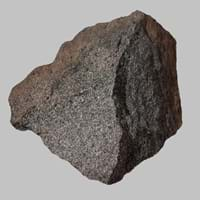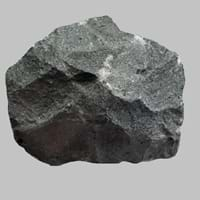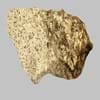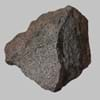Definition
Boninite is a mafic extrusive rock which is high in magnesium and silica content, formed in fore-arc environments, typically during the early stages of subduction
Latite is an igneous, volcanic rock, with aphanitic-aphyric to aphyric-porphyritic texture
Discoverer
Unknown
Unknown
Etymology
From its occurrence in the Izu-Bonin arc south of Japan
From the Latin word latium
Class
Igneous Rocks
Igneous Rocks
Sub-Class
Durable Rock, Hard Rock
Durable Rock, Medium Hardness Rock
Other Categories
Fine Grained Rock, Opaque Rock
Fine Grained Rock, Opaque Rock
Texture
Aphanitic to Porphyritic
Aphanitic to Porphyritic
Color
Bluish - Grey, Brown, Colourless, Green, Grey
Black, Brown, Colourless, Green, Grey, Pink, White
Durability
Durable
Durable
Scratch Resistant
Yes
Yes
Appearance
Dull and Soft
Rough
Interior Uses
Decorative Aggregates, Homes, Kitchens
Decorative Aggregates, Entryways, Interior Decoration
Exterior Uses
Garden Decoration, Office Buildings
As Building Stone, As Facing Stone, Garden Decoration, Office Buildings
Other Architectural Uses
Not Yet Used
Curbing
Construction Industry
As a Flux in the Production of Steel and Pig Iron, As a Sintering Agent in Steel Industry to process Iron Ore, As Dimension Stone, Cement Manufacture, for Road Aggregate, Making natural cement, Manufacture of Magnesium and Dolomite Refractories
As a Flux in the Production of Steel and Pig Iron, As a Sintering Agent in Steel Industry to process Iron Ore, As Dimension Stone, Cement Manufacture, for Road Aggregate, Making natural cement, Manufacture of Magnesium and Dolomite Refractories
Medical Industry
Not Yet Used
Not Yet Used
Antiquity Uses
Artifacts
Artifacts, Monuments, Sculpture
Commercial Uses
An Oil and Gas Reservoir, Cemetery Markers, Creating Artwork, Soil Conditioner, Source of Magnesia (MgO)
An Oil and Gas Reservoir, As a Feed Additive for Livestock, Metallurgical Flux, Soil Conditioner, Source of Magnesia (MgO)
Types
Not Available
Rhomb porphyries
Features
Available in Lots of Colors and Patterns, High Mg content, Is one of the oldest rock
Host Rock for Lead
Archaeological Significance
Monuments
Not Yet Used
Used
Famous Monuments
Not Applicable
Data Not Available
Sculpture
Not Yet Used
Used
Famous Sculptures
Not Applicable
Data Not Available
Pictographs
Not Used
Used
Petroglyphs
Not Used
Used
Figurines
Not Yet Used
Used
Formation
Boninite is a type of Igneous rock which is formed through the cooling and solidification of lava or existing rocks.
Latite is a fine-grained, hard rock which is a type of metasomatite, essentially altered basalt. It forms with or without crystallization, either below the surface as intrusive rocks or on the surface as extrusive rocks.
Mineral Content
Amphibole, Apatite, Biotite, Feldspar, Garnet, Hornblade, Ilmenite
Alkali feldspar, Biotite, Plagioclase, Pyroxene
Compound Content
Silicon Dioxide
CaO, Cl, MgO
Types of Metamorphism
Burial Metamorphism, Cataclastic Metamorphism, Contact Metamorphism, Regional Metamorphism
Burial Metamorphism, Cataclastic Metamorphism
Types of Weathering
Biological Weathering
Biological Weathering, Chemical Weathering, Mechanical Weathering
Types of Erosion
Chemical Erosion, Coastal Erosion, Wind Erosion
Chemical Erosion, Water Erosion, Wind Erosion
Grain Size
Fine Grained
Fine Grained
Fracture
Uneven
Conchoidal
Porosity
Less Porous
Very Less Porous
Luster
Vitreous
Subvitreous to Dull
Compressive Strength
Not Available
Cleavage
Not Available
Perfect
Specific Gravity
2.5-2.8
2.86
Transparency
Opaque
Translucent
Density
Not Available
2.8-2.9 g/cm3
Specific Heat Capacity
Not Available
Resistance
Heat Resistant, Impact Resistant, Pressure Resistant, Wear Resistant
Heat Resistant, Pressure Resistant
Deposits in Eastern Continents
Asia
Not Available
Not Yet Found
Africa
South Africa
Not Yet Found
Europe
England, Finland, United Kingdom
Bulgaria
Others
Antarctica, Greenland
Not Yet Found
Deposits in Western Continents
South America
Colombia, Uruguay
Not Yet Found
Deposits in Oceania Continent
Australia
New Zealand, Western Australia
Not Yet Found
All about Boninite and Latite Properties
Know all about Boninite and Latite properties here. All properties of rocks are important as they define the type of rock and its application. Boninite and Latite belong to Igneous Rocks.Texture of Boninite is Aphanitic to Porphyritic whereas that of Latite is Aphanitic to Porphyritic. Boninite appears Dull and Soft and Latite appears Rough. The luster of Boninite is vitreous while that of Latite is subvitreous to dull. Boninite is available in bluish - grey, brown, colourless, green, grey colors whereas Latite is available in black, brown, colourless, green, grey, pink, white colors. The commercial uses of Boninite are an oil and gas reservoir, cemetery markers, creating artwork, soil conditioner, source of magnesia (mgo) and that of Latite are an oil and gas reservoir, as a feed additive for livestock, metallurgical flux, soil conditioner, source of magnesia (mgo).










